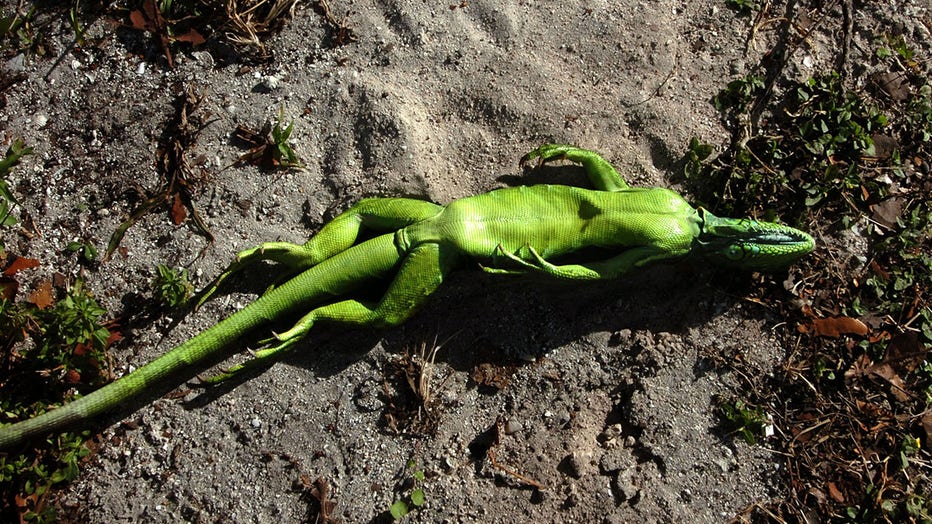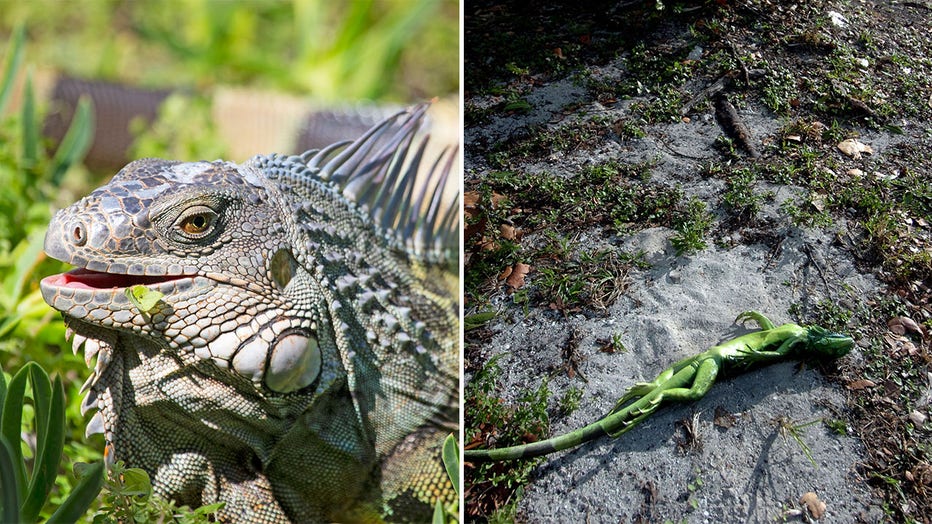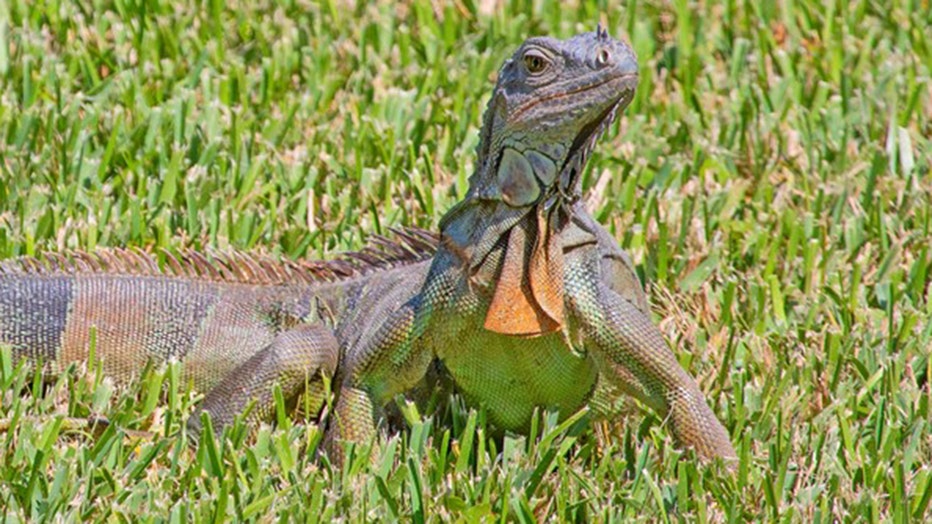When do iguanas fall from trees in Florida (and will it happen on Christmas Day)?
The science behind falling iguanas
Iguanas are cold-blooded and when the temperatures drop, the normally tropical reptiles slow and can become cold-stunned. If they happen to be in a tree or some brush, which is where they like to hang out, they might fall during their cold-stunned slumber.
MIAMI, Fla. - Although they may not be native to Florida, iguanas do have something in common with actual Sunshine State residents. They just aren't used to the cold weather.
In previous years when the temperatures are forecast to drop into the low 40s, the National Weather Service Office in Miami issues a "falling iguana" warning to residents. The unique weather alerts have been issued in the last two Florida winters.

An Iguana lies belly up under a buttonwood tree in Bill Baggs Cape Florida State Park in Key Biscayne, Florida, on January 3, 2008. Temperatures hit the high 20s and low 30s this week in Florida during an unusual cold snap. While many of the iguanas
Once temperatures drop to the 40s, they become immobile and therefore, could fall out of trees. Wildlife experts say you shouldn’t touch them. Eventually, they’ll warm back up and move again.
"Never take cold-stunned iguanas into your home! These are wild animals and may act defensively once they warm up and recover," according to the Florida Fish and Wildlife Conservation Commission.
Cold-stunned iguanas fall from trees in South Florida
Iguanas are called cold-blooded for a reason. Over the weekend, Floridians were told to watch out for iguanas during the cold snap. This man in Fort Lauderdale captured video of an iguana that was in the middle of defrosting.
Iguanas are cold-blooded and when the temperatures drop, the normally tropical reptiles slow and can become cold-stunned. The iguanas go into a sort of suspended animation mode, causing them to fall to the ground if they happen to be hanging out in the trees.
This drastic change in weather is not particularly harmful to iguanas, said Fox News Senior Meteorologist Janice Dean; but, residents should be watchful of them as males can grow to nearly five feet long and weigh nearly 20 pounds.
READ: Florida woman finds iguana in toilet, tries to flush it
Zoo Miami Communications Director Ron Magill said the temperatures need to be below 50 degrees constantly to slow an iguana considerably.
"Though there have been instances when temperatures have dropped low enough for an extended period of time where iguanas are stunned, it is not a regular occurrence," Magill said.

On the rare occasion, the temperatures in South Florida drop to the mid-to-low 40s for about 8 hours or more this is enough time for iguanas to become incapacitated. The iguanas aren't usually dead but snap out of it after a few hours.
In January 2018 in West Palm Beach, Floridians flooded social media with photos of immobilized iguanas. A prolonged cold spell in 2010 reduced the number of green iguanas in South Florida, but the population has exploded since then.
This Christmas weekend, the low temperatures will be in the 40s in South Florida. So, residents will have to wait and see (and watch their step) if it's cold enough to stun those invasive reptiles.

Green iguana (FWC)
Iguanas are not otherwise dangerous or aggressive to humans, and they are allowed to be kept as pets. They have existed in the southern part of the state since the 1960s and prefer the tropical climate of South Florida, the Caribbean, and Central and South America. They have caused damage to infrastructure, including seawalls and sidewalks, according to agencies in charge of managing the hundreds of miles of canals that channel water throughout South Florida.
According to the Florida Fish and Wildlife Conservation Commission, the first reports of the lizard-like reptiles started in the 1960s around Miami-Dade County. The Florida iguana population has continued to grow, expanding as far north as St. Lucie County and along the Gulf Coast. Green iguanas can grow up to five feet and weigh close to 20 pounds. Female iguanas can lay nearly 80 eggs a year.
FOX Weather contributed to this report

